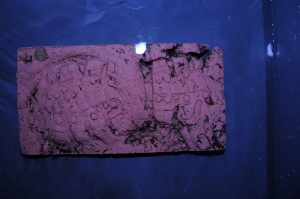CSI Photography.
Keith Smith: CSI photographer.
- Locard’s principle – Every contact leaves a trace.
- Crime scene investigator.
- Turning up at crime scene and conducting an investigation.
- Most common scenes are burglaries.
- Specialist subject – fire investigation.
- Covert worker.
- For the benefit of the court.
- Need to be able to explain a scene with a photograph.
- No different from normal photography in technical terms, but have to manage difficult positioning with equipment and set-ups.
- Being able to put a timeline on things – whether a person was actually there.
- Standardizing identification – MC Bertillon. Started to use fingerprints, and first to use a camera at a crime scene.
- Imperfect environments to take photographs.
- Need to be a competent photographer in certain circumstances.
- Photographs can prove innocence or guilt.
- Like documentary photography.
- Need to be able to walk the jury around the evidence photographically.
- Firstly, always need an overall shot.
- Next, identify all evidence types, careful not to ruin/walk over it – context shot.
- Show all individual bits of evidence.
- Scale and label evidence.
- Important to create contrast in photographs. Not to change the evidence but highlight it.
- Carry 5 different light sources.
- Photographs have to be good enough to show whether a fire scene was an attempted murder or tragic accident.
- Suspicious road traffic accidents.
- Need to have a moral compass that makes you do things as objectively as you can.
Following our lecture, we were set a number of workshop tasks to complete.
- Wearing proper equipment, we had to find fingerprints on the mug and photograph them.
- Fingerprints, scale them up.
- Footprints – use the powder over the bottom of your shoe and remove the acetate from the jelly. Step on the jelly to make a print. A photograph is to be taken before the acetate is put back on to keep.
- Photographing evidence underwater. Firstly, we tried this with normal light then we used a flash however this reflected in the water.
- Finding fingerprints on a can using UV light. Using the magnetic wand, we were able to bring up the print on the can. After photographing what we had found, we had to wipe the can clean then place our own fingerprints on the can for the next group to find.
- Painting with light. Placed in a dark room and using a long shutter speed on the camera, we used torches in order to light up the room and the important pieces of evidence.








